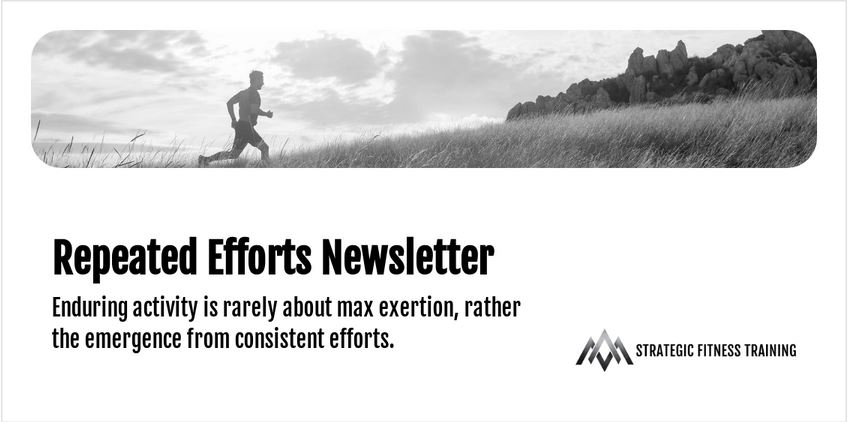3 EFFORTS FROM ME
1) When we change the angle, we change the exercise. Many exercises can easily be manipulated to fit the needs of an individual. Take this 1 Arm DB Row variation. Many people may lack the “hip mobility” or the ability to maintain the torso position – i.e. no “winging scaps” – when in a more thorax parallel to the floor traditional position. So, they assume a sumo stance, lack heel contact with the floor, “hyperextend” the spine, etc. to lock themselves in a position so that they are strong enough hold their ground and move the weight. This is all well and good for the highest levels of muscle growth and force production. However, when the goal is moving more effortlessly, taking pressure and pain off joints, or the ability to express higher velocity of movement then forcing square pegs in round holes becomes interference. The amount of weight held will be different because the exercises, and the goals, are different. We have the option to not train at the extreme.
2) I read Make It Stick a few years ago, but every now and then a glimpse of it on my bookshelf triggers me to quiz myself on the key strategies to learn and remember longer:
- Retrieval practice, such as quizzing and self-testing
- Spacing out practice
- Interleaving different but related topics or skills
- Trying to solve the problem before being taught the solution
- Distilling the underlying principles that differentiate types of problems
This shines light on how emotional topics that grab our attention, that we repeatedly encounter, and that we elaborate on become so ingrained in us; especially, when we struggle during the process. Also, this why teaching is so rewarding for lifelong learners – I love working with my mentees!
3) We create problems by simplifying too much. Humans and life are complex. There are countless interdependent variables impacting outcomes. We want facts to better “understand”, and to make better choices. We use facts to make ourselves feel correct and confident about our selection. Thus, we have a habit of creating only two sides to every decision or view. One must be right and one must be wrong, correct?
But what if instead of looking for the simple right or wrong answer we thought more, and spoke more, about the process within a context. Many more questions would arise, many more connections would appear, and there would be less concrete answers. That is OK!
We can start making decisions knowing there is upside and downside with every one because of the connectedness of complexity. Just don’t have the initial choice put everything at risk – perform safe to fail experiments.
Embrace the ambiguity but regularly monitor to alter choices. An open mind may alter the principles of our decision making.
DM me or Email me if you have any questions or topics you would like me to discuss!
If you enjoyed that, please join the Newsletter by signing up below.
Best,
Dan

